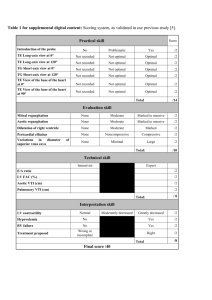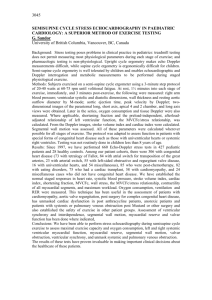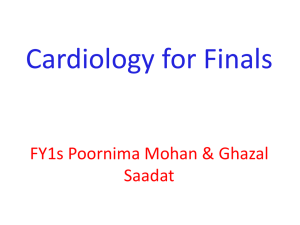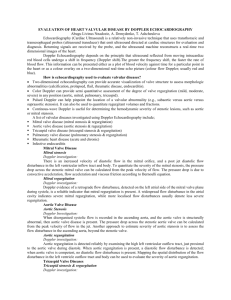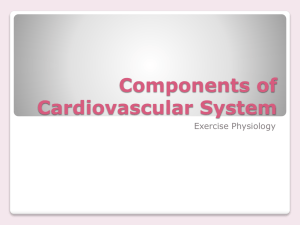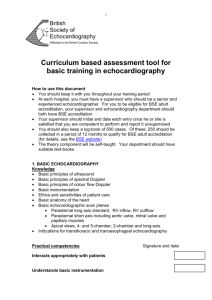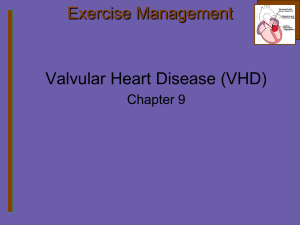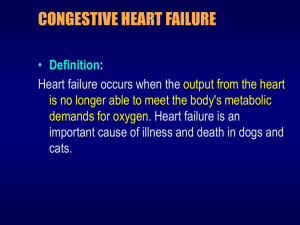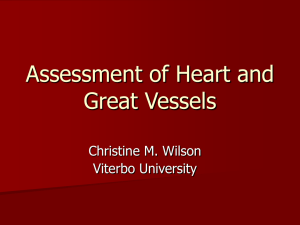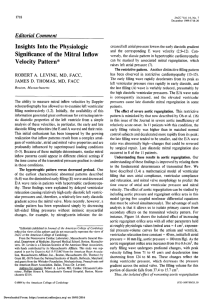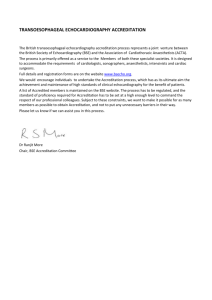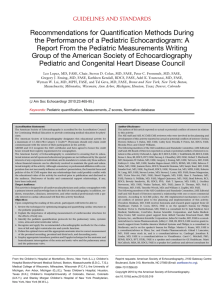Requirements for Performing Complete Transthoracic
advertisement
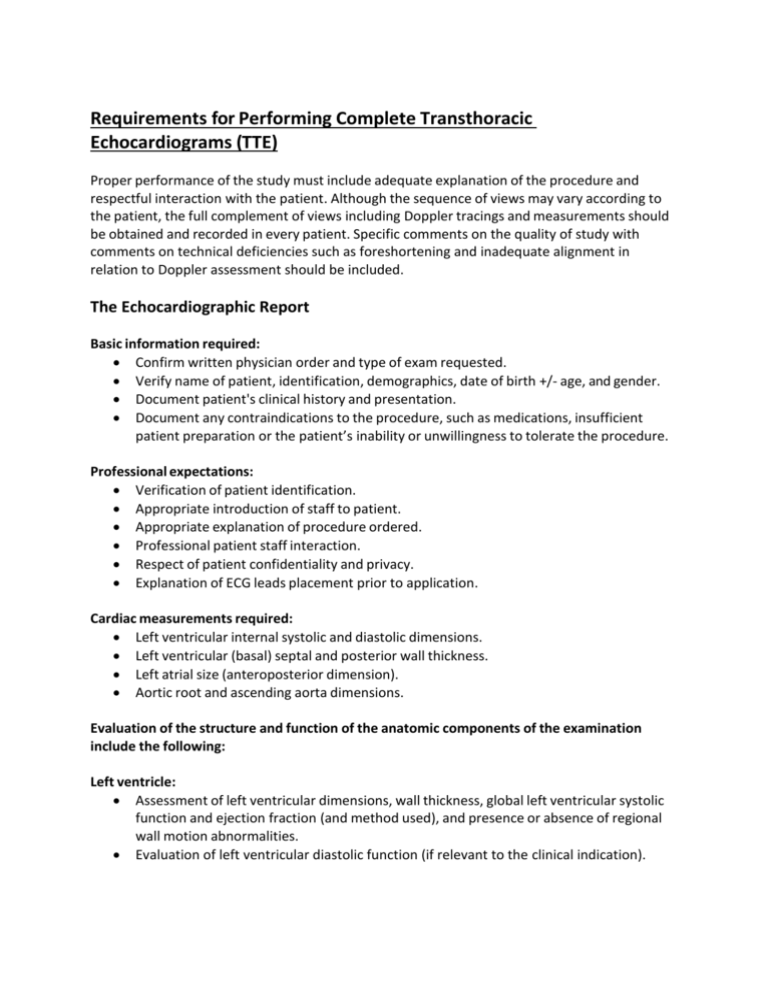
Requirements for Performing Complete Transthoracic Echocardiograms (TTE) Proper performance of the study must include adequate explanation of the procedure and respectful interaction with the patient. Although the sequence of views may vary according to the patient, the full complement of views including Doppler tracings and measurements should be obtained and recorded in every patient. Specific comments on the quality of study with comments on technical deficiencies such as foreshortening and inadequate alignment in relation to Doppler assessment should be included. The Echocardiographic Report Basic information required: Confirm written physician order and type of exam requested. Verify name of patient, identification, demographics, date of birth +/- age, and gender. Document patient's clinical history and presentation. Document any contraindications to the procedure, such as medications, insufficient patient preparation or the patient’s inability or unwillingness to tolerate the procedure. Professional expectations: Verification of patient identification. Appropriate introduction of staff to patient. Appropriate explanation of procedure ordered. Professional patient staff interaction. Respect of patient confidentiality and privacy. Explanation of ECG leads placement prior to application. Cardiac measurements required: Left ventricular internal systolic and diastolic dimensions. Left ventricular (basal) septal and posterior wall thickness. Left atrial size (anteroposterior dimension). Aortic root and ascending aorta dimensions. Evaluation of the structure and function of the anatomic components of the examination include the following: Left ventricle: Assessment of left ventricular dimensions, wall thickness, global left ventricular systolic function and ejection fraction (and method used), and presence or absence of regional wall motion abnormalities. Evaluation of left ventricular diastolic function (if relevant to the clinical indication). Right ventricle: Assessment of right ventricular size and systolic function, presence of right ventricular hypertrophy. Left atrium: Assessment of size. Right atrium: Assessment of size. Aortic valve: Aortic valve cusp morphology, presence and severity of stenosis or regurgitation. Evaluation of gradients (peak and mean) and valve area, if stenotic. Mitral valve: Mitral valve leaflet morphology, presence and severity of stenosis or regurgitation. Evaluation of gradients (peak and mean) and valve area, if stenotic. Tricuspid valve: Tricuspid valve leaflet morphology, presence and severity of stenosis or regurgitation. Evaluation of gradients (peak and mean), if stenotic. Estimation of right ventricular systolic pressure, if sufficient tricuspid regurgitation is present. Pulmonic valve: Pulmonic valve morphology, presence and severity of stenosis or regurgitation. Evaluation of gradients (peak and mean), if stenotic. Aorta (including aortic root and ascending aorta): Dimensions. Interatrial septum: Intact presence or absence of ASD/shunt. Pericardium: Presence and size of pericardial effusion, assessment of hemodynamic effects of pericardial effusion (if present). Routine Echocardiograms The comprehensive echocardiographic examination will contain the following imaging components: Parasternal long-axis of the left ventricle, left atrium and aorta. Parasternal short axis consisting of three short-axis cuts of the left ventricle (base, mid, apex), pulmonary artery view and aortic valve view. Right ventricular inflow view. Right ventricular outflow view. Apical four-chamber view. Apical two-chamber view. Apical three-chamber view (long-axis view). Apical five-chamber view. Apical imaging with particular attention to the left ventricular (LV) apex. Subcostal long-axis view. Subcostal short-axis view. Subcostal inferior vena cava view. Suprasternal views of the aorta. The comprehensive examination will contain the following Doppler components: Parasternal long-axis two-dimensional (2D) with colour screening for aortic insufficiency and mitral regurgitation. Parasternal short-axis 2D with pulmonary artery colour and pulsed wave Doppler. Right ventricle inflow view 2D with colour for tricuspid regurgitation. Apical-four chamber view 2D with colour for mitral regurgitation and tricuspid regurgitation; pulsed and continuous wave. Apical five-chamber view with colour for aortic and mitral regurgitation and pulsed/continuous wave Doppler of the aortic flow velocity. Apical three-chamber (long-axis) view 2D with colour and aortic flow velocity. Apical two-chamber with colour flow Doppler of the mitral valve. Subcostal view with colour Doppler of the interatrial septum. Suprasternal view with colour and pulsed wave/continuous wave Doppler of the descending aorta. The comprehensive examination will contain the following standard measurements: The following standard measurements must be obtained and recorded for all studies. Either Mmode or 2D can be used to obtain the measurements at end expiration, based on their respective strengths and limitations in specific situations. LV systolic and diastolic dimensions. LV diastolic wall thickness (septum and posterior wall). Ejection fraction (this should be quantified whenever technically possible by one of the validated methods (preferably by Simpson’s biplane Method of Discs) and the method used should always be identified. Visual estimation should be reserved for cases in which quantitative assessment is not technically feasible. Transvalvular aortic flow velocity. Pulmonary valve velocity. Diastolic parameters should be determined according to the current guidelines, and diastolic function classified into categories of normal, mild dysfunction (impaired relaxation), moderate dysfunction (pseudonormalization) and severe dysfunction (restriction). This assessment is based on consideration of the relevant parameters available from the Echocardiographic examination which can include mitral inflow velocities, mitral deceleration time, isovolumic relaxation time, pulmonary venous systolic and diastolic velocities, and tissue Doppler assessment of mitral annular motion. Tricuspid regurgitation velocity to calculate right ventricular (RV) systolic pressure. Measurements of the aortic root and ascending aorta (sinuses of Valsalva and proximal ascending aorta) and to include the annulus if indicated. Left atrial dimensions. Where clinical indications or findings warrant include: Blood pressure and heart rate should be included in the setting of valvular heart disease to allow proper assessment of intracardiac hemodynamics. Transvalvular mean and maximal gradients with continuous wave Doppler for stenotic valves and valvular prostheses, including views from multiple windows, such as the suprasternal and right sternal border. Spectral display of complete envelope of continuous wave Doppler signal of valvular regurgitation. Proximal isovelocity surface area calculation or other quantitative methods for assessment of valvular regurgitation. Respiratory variation of mitral and tricuspid inflow Doppler (e.g., pericardial disease). Hepatic venous flow pattern and inferior vena cava collapse. Shunt calculation. Descending aortic velocity and presence of flow reversal, for assessment of aortic coarctation and regurgitation.
